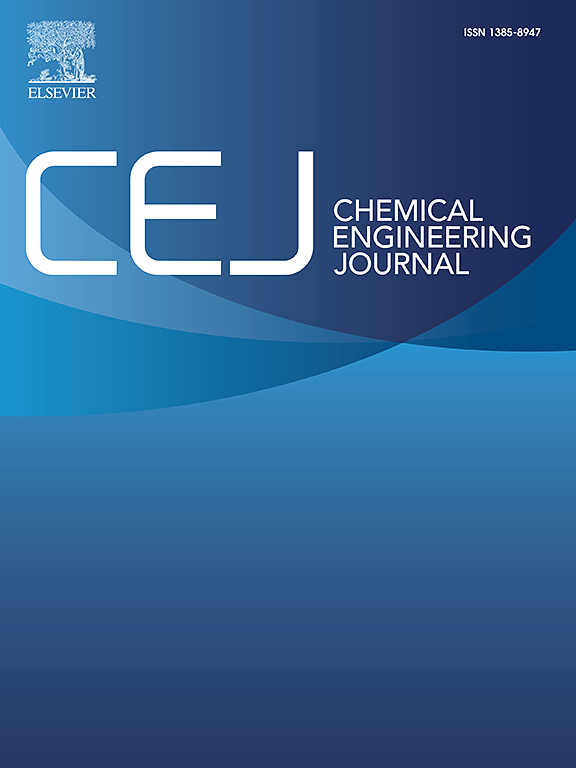Efficient and selective gold recovery from e-waste by simple and easily synthesized covalent organic framework
IF 13.3
1区 工程技术
Q1 ENGINEERING, CHEMICAL
引用次数: 6
Abstract
With the increase of discarded electronic devices, gold recovery from e-waste has induced great interests. Covalent organic framework (COF) as a new kind of porous crystalline material has great advantages in gold recovery due to its large specific surface area, selective functional groups, regular channels and controllable synthesis. Herein, an abundant hydroxyl groups decorated COF (TzDa-COF) with simple structure and high crystallinity was prepared for gold recovery. TzDa-COF exhibits a great Au(III) uptake up to 1866 mg·g−1 with high selectivity and fast kinetics, which surpasses most of other COFs with complicated structures and multiple functional groups. Furthermore, dynamic adsorption column experiment for Au(III) in simulated e-waste was conducted, in which at a fast flow rate of 3 mL·min−1 almost a complete Au(III) removal was achieved. By using the density functional theory (DFT), powder X-ray diffraction, infrared spectroscopy and X-ray photoelectron spectroscopy, we demonstrate that the Au(III) recovery mechanism of TzDa-COF mainly consists of coordination and reduction. The performance of TzDa-COF suggests attractive opportunity in practical recovery of gold from e-waste.利用简单易合成的共价有机骨架从电子垃圾中高效、选择性地回收黄金
随着废弃电子设备的增多,从电子垃圾中回收黄金引起了人们极大的兴趣。共价有机骨架(COF)作为一种新型多孔晶体材料,具有比表面积大、官能团选择性强、通道规则、合成可控等优点,在金回收方面具有很大的优势。本文制备了一种结构简单、结晶度高的羟基修饰COF (TzDa-COF),用于金的回收。TzDa-COF对Au(III)的吸收量高达1866 mg·g−1,具有高选择性和快速动力学,超过了大多数结构复杂、多官能团的cof。在模拟电子垃圾中进行了Au(III)的动态吸附柱实验,在3 mL·min−1的快速流速下,几乎可以完全去除Au(III)。通过密度泛函理论(DFT)、粉末x射线衍射、红外光谱和x射线光电子能谱分析,证明了TzDa-COF的Au(III)回收机制主要是配位和还原。TzDa-COF的性能为电子垃圾中黄金的实际回收提供了诱人的机会。
本文章由计算机程序翻译,如有差异,请以英文原文为准。
求助全文
约1分钟内获得全文
求助全文
来源期刊

Chemical Engineering Journal
工程技术-工程:化工
CiteScore
21.70
自引率
9.30%
发文量
6781
审稿时长
2.4 months
期刊介绍:
The Chemical Engineering Journal is an international research journal that invites contributions of original and novel fundamental research. It aims to provide an international platform for presenting original fundamental research, interpretative reviews, and discussions on new developments in chemical engineering. The journal welcomes papers that describe novel theory and its practical application, as well as those that demonstrate the transfer of techniques from other disciplines. It also welcomes reports on carefully conducted experimental work that is soundly interpreted. The main focus of the journal is on original and rigorous research results that have broad significance. The Catalysis section within the Chemical Engineering Journal focuses specifically on Experimental and Theoretical studies in the fields of heterogeneous catalysis, molecular catalysis, and biocatalysis. These studies have industrial impact on various sectors such as chemicals, energy, materials, foods, healthcare, and environmental protection.
 求助内容:
求助内容: 应助结果提醒方式:
应助结果提醒方式:


